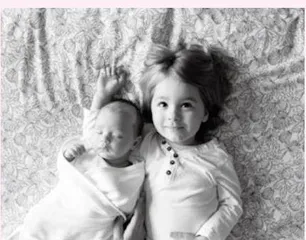The Power of Puppies: Looking at Cute Images Can Improve Focus 小狗的力量——看可爱的图像可以提高注意力

“Cute” pictures of baby animals, including puppies and kittens, can have powerful effects on people’s attention and concentration, psychological scientists at Hiroshima University in Japan have found. Led by researcher Hiroshi Nittono, the team conducted three experiments with 132 university students and concluded that cute images may help improve performance on detail-oriented tasks that require concentration.
Research has long shown that people are more likely to respond to “cute” baby-like features—a large head, a high big forehead, and large eyes—known as the “baby schema”. Baby animals also have baby schema characteristics, which helps explain why we think puppies and kittens are cuter than dogs and cats.
The baby schema can activate a number of inborn processes in people, including smiling and positive affect and other nurturing behavior, but the research suggests that cute images may also have an impact on attention and perception.
In the first experiment from Nittono’s team, a group of 48 college students were asked to play a game. The students used tweezers to remove tiny plastic body parts from holes in the body of a “patient” without touching the sides of the holes. After playing one round of the game, half of the students looked at a series of seven images of cute puppies and kittens while the others viewed pictures of adult dogs and cats.
日本广岛大学的心理学家发现,诸如小猫、小狗之类的小动物的“可爱”照片可以对人们的注意力和专注力产生显著的影响。研究员入户野宏带领的团队对 132 名大学生进行了三项实验,得出的结论是:可爱的图像可能有助于提高需要注意力集中的精细任务的表现。
长期以来的研究表明,人们多对“可爱”的婴儿般的特征做出反应——大头、高大的前额和大眼睛——这些被称为“婴儿图式”。小动物也有婴儿图式的特征,这就解释了为什么我们认为小猫和小狗比成年的猫和狗更可爱。
婴儿图式可以激活人们的许多潜在的行为,包括微笑、正向情感和其他养育行为,但该研究表明,可爱的图像也可能对人们的注意力和感知产生影响。
入户野宏团队进行的第一个实验要求48名大学生玩一个游戏。学生用镊子从“病人”身上的洞中取出微小的塑料身体部位,而不能接触洞的边缘。一轮游戏结束后,一半的学生观看了7张为一组的可爱的小猫和小狗的照片,而另一半学生则观看了成年猫和狗的照片。
The students who had looked at cute baby animal photos significantly improved their performance on the second round. Interestingly, they engaged in the task at a slower, more deliberate pace after viewing the photos. The students who had looked at adult animal photos showed no change in performance in both trials. “This finding suggests that viewing cute images makes participants behave more deliberately and perform tasks with greater time and care,” writes Nittono.
Between each task, students were randomly shown images of either baby animals, adult animals, or other objects. After viewing cute images, students were faster at processing the small letters relative to the large ones. This result suggests that cute images help people pay more attention to details. One explanation for this could be because babies require caregivers to pay careful attention to their mental and physical well-being, as well as potential watchfulness against any possible danger.
The researchers suggest that cute images may be helpful in improving performance for jobs that demand significant attention to detail, like air traffic control or software programmers. From the Super Bowl to the Puppy Bowl, this study suggests that puppies may be a winning choice for advertisers looking to stand out and make an impression.
看过可爱小动物照片的学生在第二轮的表现明显提升。有趣的是,在看完照片后,他们以更慢、更从容的速度完成了这项任务。看过成年动物照片的学生在两次试验中的表现没有显著变化。入户野宏写道:“这一发现表明,观看可爱的图像会让参与者表现得更加从容,并花更多的时间和精力来执行任务。”
在每项任务之间,学生会随机看小动物、成年动物或其他物体的照片。观看可爱的照片后,学生识别小字母的速度比大字母的更快。这一结果可表明,可爱的图像有助于人们更加关注细节。对此的一种解释可能是因为婴儿需要照顾他们的人密切关注他们的身心健康,并对任何可能的危险保持警惕。
研究人员认为,可爱的图像可能对需要高度关注细节的工作有所帮助,如空中交通管制或软件程序员。这项研究表明,从“超级碗”到“狗狗超级杯”,对于想要脱颖而出并给人留下深刻印象的广告商来说,选择小狗可能才会获胜。